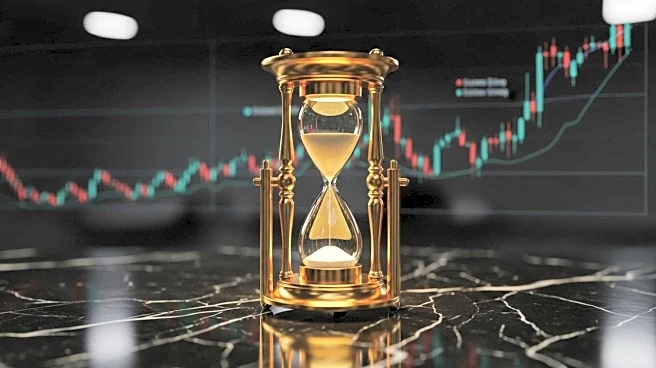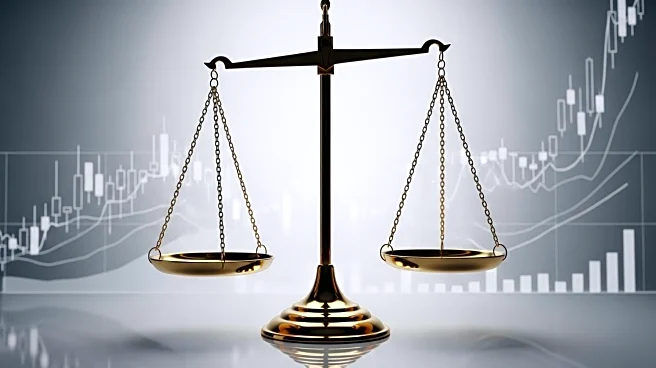What's Happening?
Gold prices have reached an all-time high of $3,880.8 per ounce, marking a 47% increase this year. This surge is attributed to ongoing economic uncertainty, a weaker U.S. dollar, and anticipated interest rate cuts by the Federal Reserve. The Fed is expected to reduce rates in October and December, as indicated by the CME's FedWatch Tool. The current environment of fear of missing out (FOMO) is driving expectations that gold could surpass $4,000 per ounce by late 2025 or early 2026. Aakash Doshi, head of gold strategy for State Street Investment Management, suggests that the reduced opportunity cost of holding gold and potential changes in the US Treasury curve are supporting this trend.
Why It's Important?
The rising gold prices reflect broader economic concerns, including the impact of a government shutdown and a declining U.S. dollar. As gold is traditionally seen as a safe-haven asset, its increasing value indicates investor anxiety about economic stability. The potential for further rate cuts by the Federal Reserve could exacerbate these concerns, as lower interest rates typically reduce the opportunity cost of holding non-yielding assets like gold. This situation could lead to increased demand for gold, further driving up prices. The trend also highlights the potential for market bubbles, particularly in the credit markets, as investors seek alternative assets.
What's Next?
If the Federal Reserve proceeds with the anticipated rate cuts, it could further influence gold prices and investor behavior. The continued inflow into gold exchange-traded funds (ETFs) suggests that investors are positioning themselves for ongoing economic volatility. This could lead to tighter supply-demand balances in the gold market, potentially driving prices even higher. Additionally, the weakening U.S. dollar may continue to impact international trade and economic relations, prompting further adjustments in investment strategies.
Beyond the Headlines
The current economic climate underscores the complex interplay between monetary policy, currency valuation, and commodity markets. The potential for gold to reach unprecedented price levels raises questions about the sustainability of current economic policies and the long-term implications for global financial stability. As investors increasingly turn to gold, the dynamics of supply and demand could shift, affecting not only financial markets but also industries reliant on gold for production and manufacturing.










